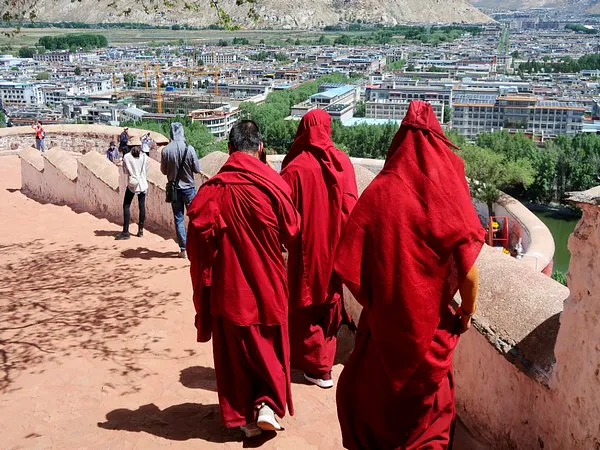The sudden COVID outbreak in Tibet has stirred the Communist Party of China which has taken strict measures in the region, including some very suspicious ones as well, which has resulted in adversely affecting the lives of the Tibetans.
This comes as the Chinese autonomous region of Tibet, which barely reported COVID patients for more than two years is now said to be facing a spate of new infections.
China is hell-bent on imposing the Zero-COVID-like policies in the affected regions causing a lot of concern and impacting the lives of the people through various means, media reports said. According to Tibet Press citing people speaking with Radio Free Asia, said that some residents living in Lhasa shared that due to the severe curbs in the region they are finding it hard to even purchase grocery items including vegetables.
Chinese authorities have imposed restrictions on movement on the movement of Tibetans however the reports do not disclose whether there will be any sort of punishment if the Tibetans violated the rules. No one talks about the severity of the punishment.
Reports and news regarding the situation have been coming out but the true matter taking place inside Tibet is not fully known. Because of the severe restrictions put in place, not only tourists but Tibetan students who attend schools in China are not able to make it back to school on time. The situation is severe in the regions, as per the media portal.
China is said to be the first country to have experienced the severity of the outbreak and to have imposed drastic measures including lockdowns and face mask mandates in response to the criticality. Now Beijing is trying to play the same cards in Tibet by subjecting the people of the region to the same kind of stern curbs.
It has become a well-known phenomenon in the world of how the initial Wuhan COVID- 19 outbreak took place with lasting impacts. The communist party’s response to that has been criticized as well. Information censorship is another aspect which has agitated the people.
In January 2020, Tibet reported only one infection with confirmed symptoms. No cases were reported after that in the 900 days that followed. The regional capital of Lhasa however reported one symptomatic patient and seventeen asymptomatic patients in the beginning of August. The city then reportedly sealed a few buildings.
People who were listed in the 18 cases had entered Lhasa from the city of Shigatse, Tibet’s second biggest city with a population of about 800,000. The city later imposed a three-day curb during which travel was restricted and various events were suspended.
The Potala Palace in Lhasa has been closed and the authorities are now hosting mass testing after the sudden outbreak. The deputy director of the Tibetan Region’s Centre for Disease Prevention and Control, Pengcuo Ciren stated that the first rounds of mass testing in Lhasa and Shigatse have started while the second rounds will follow suit.
Major tourist sites in Lhasa, the Potala Palace, Lop Noringa and the Tibet Museum have all been closed without further notice. The world has somewhat come to terms with the virus and found ways to live with it by minimizing the risks and severity, China is still struggling with it by following means of strict isolation, quarantine, mandatory nuclei tests and contract-tracing regimen to cot the cause from its root and to maintain their strict zero-COVID policy.

